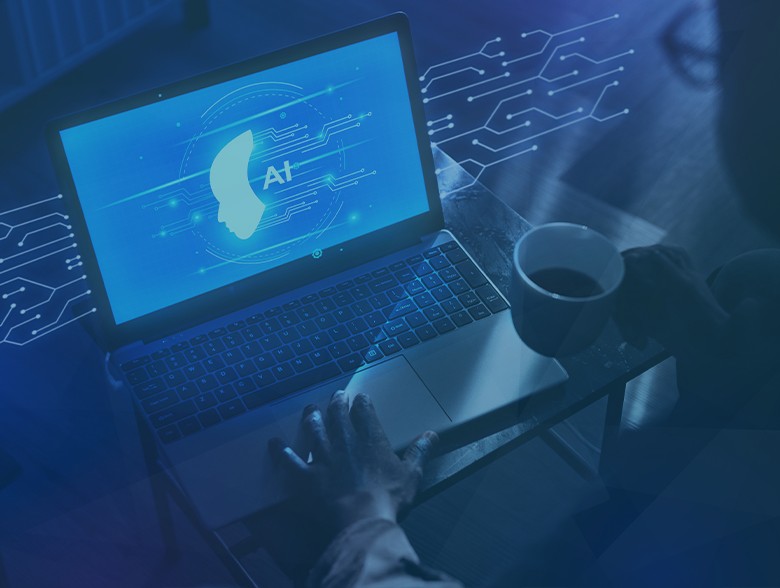Moving beyond the hype, are AI cybersecurity solutions as advanced as they claim?
By John Trest, Chief Learning Officer, VIPRE Security Group
The emergence of numerous AI-driven cybersecurity products emphasizes the significance of AI in the field. However, it is essential to move beyond the hype and take a realistic look at AI’s capabilities, considering its vast scope and varying levels of sophistication. Are the solutions offered truly as advanced as they claim?
Current AI technologies operate above automation, utilizing algorithms, machine learning, and natural language processing. As a result, many of the products may not be as sophisticated as customers perceive them to be. It’s important to clarify that the primary purpose of AI products is to streamline and automate repetitive tasks, provide quick access to information, and facilitate faster decision-making. Essentially, they complement human intelligence with technology, enabling more rapid processing of complex data that would pose challenges for humans.
AI-powered programs assist developers in creating personalized outlines and templates for their code, similar to predictive coding or chat functionality. While these benefit organizational efficiency, it is also essential to acknowledge the adversarial impact of AI.
AI and cybersecurity
Cybercriminals also leverage AI technologies to their advantage. For example, malicious applications can collect and process personal data much faster than humans, enabling cybercriminals to engineer more sophisticated phishing emails and create malware more efficiently.
These threats have been extensively highlighted in discussions on dangerous attack techniques. We’re only beginning to see the scope of these attacks and the approaches attackers are developing because of this technology. The rapid advancements in AI technology have opened up new avenues for attackers to exploit vulnerabilities and launch sophisticated attacks. As AI algorithms become more powerful and capable, cybercriminals are leveraging these advancements to amplify the scale and effectiveness of their operations.
The true scope of AI-driven attacks is still unfolding as attackers continuously evolve their tactics and techniques. The integration of AI enables them to gather and process vast amounts of data with remarkable speed and precision. This newfound capability empowers cybercriminals to develop more sophisticated and convincing phishing emails, making it increasingly challenging for individuals to discern between genuine and fraudulent communications.
Moreover, AI enables attackers to create malware that adapts and evolves in response to changing security measures. By leveraging machine learning algorithms, malicious actors can analyze the behavior of security systems, identify weaknesses, and craft tailored attacks that evade detection. These AI-powered attacks can potentially infiltrate organizations, compromise sensitive data, and inflict substantial damage before detection.
Furthermore, as AI advances, we are only beginning to scratch the surface of the scope and scale of these AI-driven attacks. The rapidly evolving nature of AI technology means that attackers constantly refine their techniques and develop new approaches to exploit vulnerabilities. As a result, the cybersecurity landscape is in a perpetual race to keep pace with the ever-growing sophistication of AI-powered threats.
Cybersecurity professionals must stay abreast of the latest developments in AI-driven attacks to counter these emerging challenges effectively. By closely monitoring threat intelligence, collaborating with industry peers, and investing in robust defensive measures, organizations can better prepare to mitigate the risks posed by AI-enabled cyberattacks.
As the cybersecurity community gains a deeper understanding of the potential impact of AI, it becomes increasingly evident that proactive measures are essential. This includes investing in advanced threat detection systems that leverage AI algorithms to analyze patterns, behaviors, and anomalies in network traffic and email communications. Additionally, fostering a cybersecurity awareness and education culture within organizations can empower individuals to recognize and respond to AI-powered attacks effectively.
To truly understand the capabilities of AI, must we first identify the problems it aims to solve and ask relevant questions to develop solutions to these emerging challenges. By doing so, we can determine whether a particular product genuinely addresses organizational needs or is only another automation solution that solves problems we don’t encounter.
AI and email security
Let’s shift gears, bringing one real-world issue into the conversation. Email is the most widely used communication asset in businesses across the globe, transcending borders and languages. It is crucial to recognize that cybersecurity, including email security, should be part of determining how actors can and will use AI and email to make their jobs easier and more challenging to detect phishing and other attacks.
As cybersecurity evolves, professionals must anticipate how malicious actors could leverage AI to strengthen their attacks and evade detection. By understanding these potential threats, we can better develop proactive measures to safeguard our digital infrastructure.
One area where AI can bolster cyberattacks is in the realm of social engineering, specifically phishing attacks. Phishing involves tricking individuals into revealing sensitive information or performing actions that compromise their security. Attackers can employ AI algorithms to create highly convincing phishing emails by analyzing vast amounts of data, including personal details, social media profiles, and online behaviors. This information can be used to craft customized emails that appear legitimate, making them more likely to deceive unsuspecting recipients.
AI-powered phishing attacks could employ advanced natural language processing (NLP) algorithms to generate persuasive email content that mimics trusted sources’ writing style and tone. These sophisticated messages might bypass traditional spam filters and raise fewer suspicions among recipients. Furthermore, AI algorithms can analyze patterns in email responses, enabling attackers to automate and refine their techniques based on real-time feedback.
Another aspect of email-based attacks that AI could enhance is email spoofing. Email spoofing involves forging the sender’s address to make an email appear to come from a trusted source. AI algorithms can analyze legitimate senders’ communication patterns and linguistic styles to generate highly convincing spoofed emails. This technique could impersonate high-ranking executives, reputable organizations, or even friends and family members, increasing the chances of luring victims into providing sensitive information or executing malicious actions.
Furthermore, AI can aid cybercriminals in evading detection by improving the stealth and persistence of their attacks. Machine learning algorithms can analyze security systems, identify vulnerabilities, and adapt attack techniques accordingly. By constantly evolving and adapting, AI-powered attacks can stay one step ahead of traditional security measures, making them more difficult to detect and mitigate.
To combat these emerging threats, the cybersecurity community must also harness the power of AI. By leveraging machine learning and AI algorithms, security professionals can develop robust email security solutions to detect and block sophisticated phishing attempts. AI-powered email security systems can analyze email content, attachments, and sender behavior to identify indicators of malicious activity. Furthermore, AI algorithms can learn from vast datasets of known attacks to proactively identify new attack patterns and rapidly respond to emerging threats.
Conclusi on
In conclusion, combining AI and email-based attacks presents new challenges for cybersecurity professionals. AI can enhance the sophistication and effectiveness of phishing attacks, making them more challenging to detect and increasing the potential for successful compromises. However, we must approach AI-driven cybersecurity solutions with a realistic perspective, acknowledging their capabilities and limitations.
While AI excels in automating repetitive tasks, facilitating faster decision-making, and processing complex data, we must also recognize that AI technologies are not immune to adversarial exploitation. Cybercriminals quickly leverage AI for their malicious intents, using it to expedite the creation of sophisticated phishing emails and more efficient malware. These AI-powered attacks’ true extent and impact are still being realized as attackers continue to innovate.
To fully harness the potential of AI in cybersecurity, we must identify the specific challenges AI aims to address and ask relevant questions to develop tailored solutions. By scrutinizing whether a particular product genuinely addresses organizational needs or merely offers automated functionalities, we can discern the value and effectiveness of AI tools.
As the cybersecurity landscape evolves, organizations and security professionals must remain vigilant and adapt their defenses to the ever-evolving cyber threats. Collaborating with AI technology while leveraging human expertise is critical to staying ahead in this complex and interconnected world. By continually assessing the capabilities and limitations of AI-driven solutions, we can enhance our security posture and safeguard our digital assets effectively.
In summary, the emergence of AI-driven cybersecurity products highlights the significance of AI in the field. However, a balanced perspective is crucial to separate the hype from reality. By understanding the capabilities of AI, acknowledging its adversarial impact, and adopting a proactive approach, we can leverage AI to bolster our defenses and protect against evolving cyber threats.
About the Author
 John Trest is the Chief Learning Officer at VIPRE Security Group. John is highly skilled in driving product and curriculum strategy for diverse compliance training courses, implementing innovative learning initiatives, and fostering inclusive and motivating training environments for long-term information retention. Adept at stakeholder engagement, technology integration, and client relationship management, including Fortune 500 businesses, he values his ability to stay abreast of adult learning and instructional design best practices and cutting-edge technologies. You can find more about John at https://vipre.com/.
John Trest is the Chief Learning Officer at VIPRE Security Group. John is highly skilled in driving product and curriculum strategy for diverse compliance training courses, implementing innovative learning initiatives, and fostering inclusive and motivating training environments for long-term information retention. Adept at stakeholder engagement, technology integration, and client relationship management, including Fortune 500 businesses, he values his ability to stay abreast of adult learning and instructional design best practices and cutting-edge technologies. You can find more about John at https://vipre.com/.

